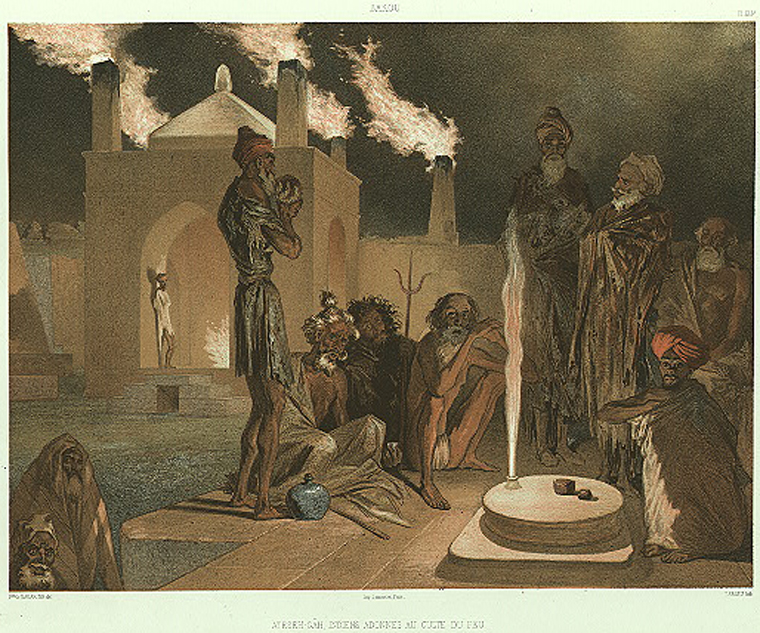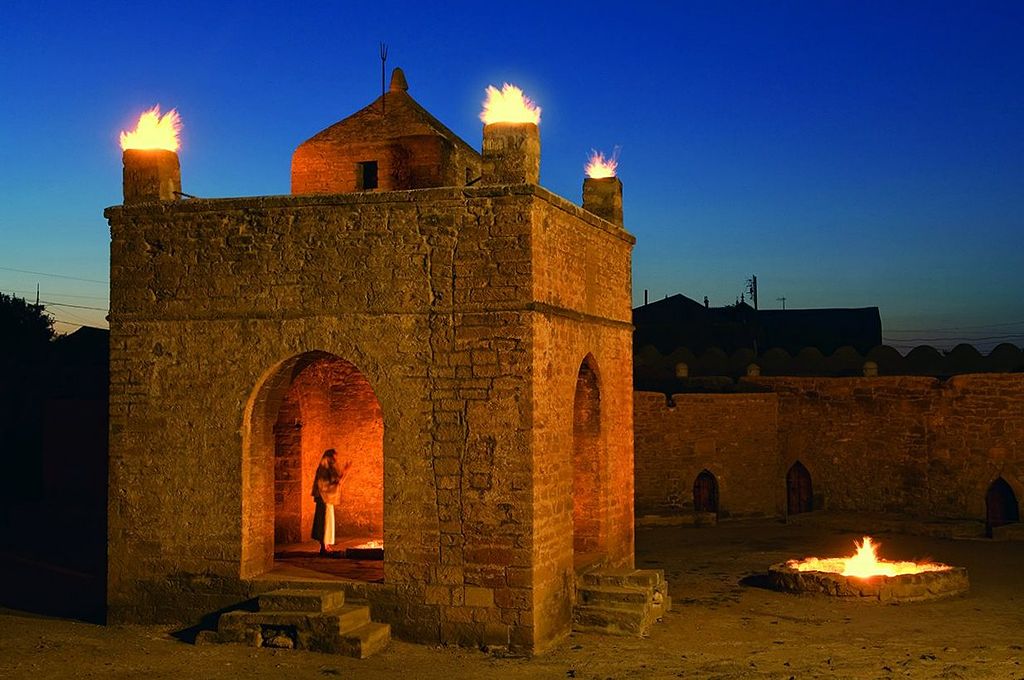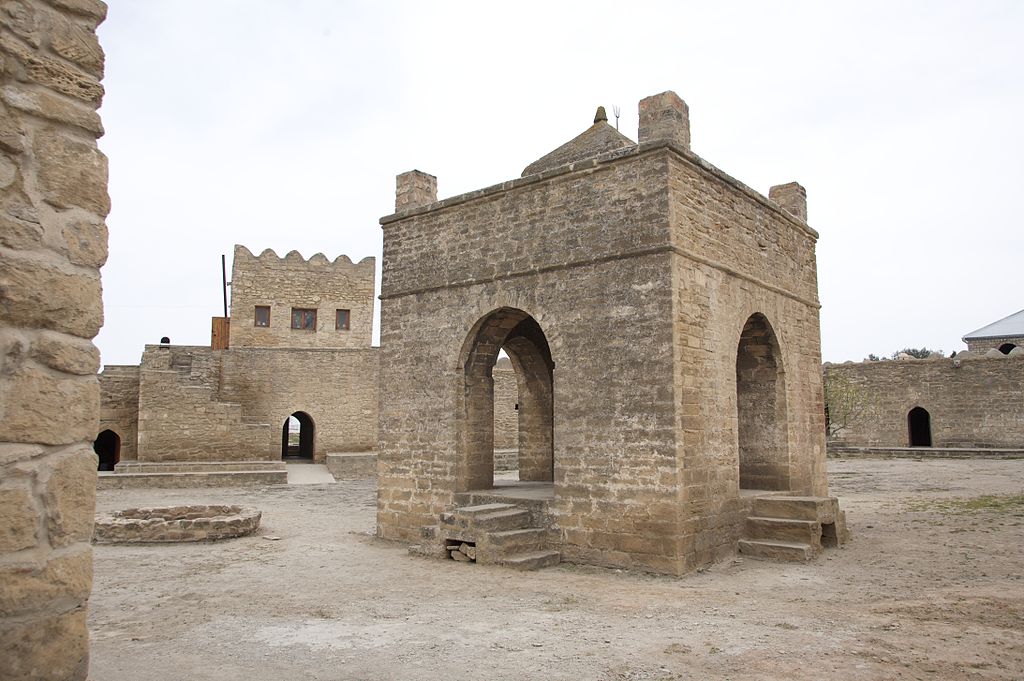The Baku Ateshgah or "Fire Temple" is a castle-like religious temple in Surakhani, a suburb in Baku, Azerbaijan. Based on Persian and Indian inscriptions, temple was used as a Hindu place of fire worship . "Atash" is the Persian word for fire. The pentagonal complex, which has a courtyard surrounded by cells for monks and a tetrapillar-altar in the middle, was built during the 17th and 18th centuries. It was abandoned after 1883[citation needed] when oil and gas plants were established in the vicinity, ending the flow of natural gas to the temple and extinguishing the holy fire.
The Baku Ateshgah was a pilgrimage and philosophical centers of fire worshipers from Multan (now located in Pakistan), who were involved in trade with the Caspian area via the famous "Grand Trunk Road". The four holy elements of their belief were: ateshi (fire), badi (air), abi (water), and heki (earth). The temple ceased to be a place of worship after 1883 with the installation of petroleum plants (industry) at Surakhany. The complex was turned into a museum in 1975. The annual number of visitors to the museum is 15,000.
The Temple of Fire "Ateshgah" was nominated for List of World Heritage Sites, UNESCO in 1998 by Gulnara Mehmandarova — president of Azerbaijan Committee of ICOMOS—International Council on Monuments and Sites . It was also featured on an episode of Globe Trekker.
It was declared a state historical-architectural reserve by decree of the President of Azerbaijan on 19 December 2007.
The Persian toponym Atashgah (with Russian/Azerbaijani pronunciation: Atashgyakh/Ateshgah) literally means "home of fire." The Persian-origin term atesh (آتش) means fire, and is a loanword in Azerbaijani. Gah (گاہ) derives from Middle Persian and means "throne" or "bed". The name refers to the fact that the site is situated atop a now-exhausted natural gas field, which once caused natural fires to spontaneously burn there as the gas emerged from seven natural surface vents. Today, the fires in the complex are fed by gas piped in from Baku, and are only turned on for the benefit of visitors.
Surakhani, the name of the town where the Ateshgah is located, likely means "a region of holes", but might perhaps be a reference to the fire glow as well. A historic alternative name for Azerbaijan as a whole has been Odlar Yurdu, Azeri for land of fires.
“Surakhany” in Tati (language of Surakhany, close to Persian) means “hole with the fountain”.












